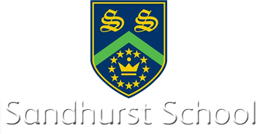History
Intent:
First and foremost, we want our students to be as passionate and dedicated to history as we are. This happens through our broad and balanced curriculum and the learning activities conducted in each lesson. They are engaging with clear objectives and allow for students of all abilities to access the lesson and work to the best of their ability. This is also achieved through our offering of school trips, where we give the students a chance to understand historical concepts and content in a very real, tangible manner.
Secondly, we want our students to develop their historical skills in a way that will allow them to apply them to different contexts within school and in their life. Being able to discern truth, analyse interpretations of events, understand why people act in a certain manner or hold particular views on specific topics, use a range of ways to communicate ideas and create meaningful arguments based on clear evidence are all skills which are crucial to the study of History and equally important in the time period we live in.
Further information
Our Curriculum
Our curriculum is broad and challenging and goes beyond the National Curriculum requirements. We build upon the knowledge and skills acquired in KS2, which varies depending on which feeder school our students are joining from. We endeavour to foster a smooth transition through engaging activities and revisiting key concepts. Students will acquire a strong foundation in key historical knowledge, spanning from Ancient Egypt to the Twentieth Century. This includes key events, figures, and themes which are explored across our units. We aim to equip students with the ability to analyse and evaluate sources, compare different interpretations, and construct well-supported arguments. Students will learn to engage in historical debates with an open, rational and objective mind, considering topical and controversial units such as the British Empire. We are committed to ensuring that all students, regardless of their background or abilities, have equal access to a rich and engaging history curriculum. We aspire to develop not only knowledgeable historians but also well-rounded individuals with transferable skills.
Implementation: Teaching and Planning
History lessons will promote a range of reading skills by exposing students to diverse historical texts and encouraging critical analysis. Students will be encouraged to articulate their ideas confidently through rich discussions and the comprehension of texts. In addition, students will be encouraged to convey their ideas in different ways such as written analysis and interpretation of sources. Students will be exposed to different perspectives from different periods of history on a regular basis during their lessons. We actively seek opportunities to connect historical topics with other subjects including English, Drama, LIFE and Geography which offers a holistic learning experience for students.
Assessment
We utilise a variety of assessment methods, including extended responses, low-stakes in-class testing, retrieval, source analysis activities, and classroom discussions. Regular and constructive verbal feedback will be provided to support individual progress and identify areas for improvement. Each termly assessment will have personalised feedback as a method for improvement. We are committed to ensuring that history is accessible, through modelling and engaging for all students. We provide adapted learning opportunities and support to cater to the individual needs of diverse learners, including those with special educational needs and disabilities, students from disadvantaged backgrounds, EAL, Forces Children and Lower Prior Attainers.
Impact
We believe that studying history equips students with the vital tools to become well-informed, critical, and responsible citizens of the future who can think critically and make educated evaluations about the world around them.

Curriculum time allocation
KS3 (Years 7, 8 and 9) - 4 hours per fortnight
KS4 (Years 10 and 11) - 5 hours per fortnight
Homework policy
Curriculum pathways
KS4 Personal Learning Checklists (PLC)
History - Option 12 Topic 1 Warfare and British society, c1250 to present - 1HIB_MN
History - Option 12 Topic 2 London and the Second World War, 1939–45 - 1HIB_MN
History - Option 26 & 27 Topic 1 The origins of the Cold War, 1941-58 - 1HIB_MN
History - Option 26 & 27 Topic 2 Cold War crises, 1958 to 70 - 1HIB_MN
History - Option 26 & 27 Topic 3 The end of the Cold War 1970 to 91 - 1HIB_MN
History - Option 33 Topic 1 civil rights movement 1954-60 - 1HIB_MN
History - Option 33 Topic 2 Protest, progress and radicalism 1960 to 75 - 1HIB_MN
History - Option 33 Topic 3 US involvement in the Vietnam War 1954 to 75 - 1HIB_MN
History - Option B1 Topic 1 Anglo Saxon England - 1HIB_MN
History - Option B1 Topic 2 William I - 1HIB_MN
History - Option B1 Topic 3 Norman England 1066 to 88 - 1HIB_MN
KS4 Exam Information
| Exam | History |
| Board | Pearson Edexcel |
| Spec | 1HI0 |
| Paper 1 |
Warfare and British society, c1250-present and London and the Second World War, 1939-45. (Option 12)
Section A: London and the Second World War, 1939-45.
Section B: Warfare and British society, c1250-present
|
| Paper 2 |
Anglo-Saxon and Norman England, c1060-88 (Option B1) and Superpower relations and the Cold War, 1941-91 (Option P4)
Booklet B: Anglo-Saxon and Norman England, c1060-88 (Option B1)
Booklet P: Superpower relations and the Cold War, 1941-91 (Option P4)
|
| Paper 3 |
The USA, 1954-75: conflict at home and abroad (Option 33)
Section A
Section B
|
Department Contact
Miss D Niven
dniven@sandhurstschool.org.uk

